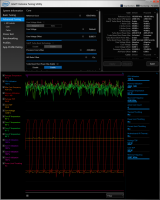- Joined
- May 18, 1997
- Messages
- 55,601
This is our first retail purchased Intel Core i7-7700K processor that we sourced through Amazon. This one makes four that we have had hands-on and three that we still have here in our possession. To my chagrin, it does not look like 5GHz/3600MHz is in the cards for this one when it comes to running stability tests. I have run the vCore up to an actual 1.38v, and I think I might call it there. That makes our 5GHz rate 25% so far.
The black marks are the IHS are in preparation for delidding.
The black marks are the IHS are in preparation for delidding.
As an Amazon Associate, HardForum may earn from qualifying purchases.
![[H]ard|Forum](/styles/hardforum/xenforo/logo_dark.png)
